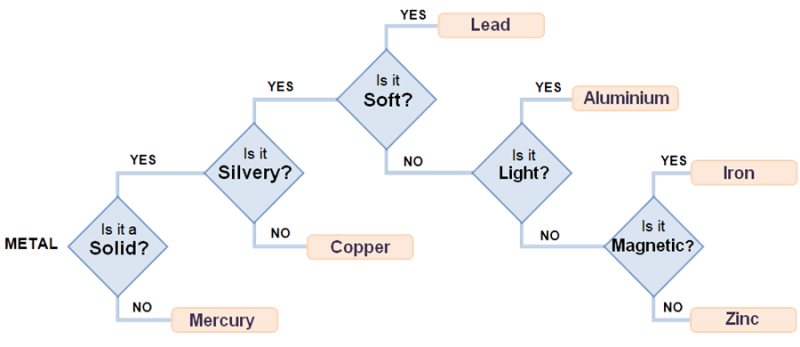Properties of metals
This task assesses the use of a key to identify 6 given metals.
Pere found some metal objects when he was cleaning out the garage. He wanted to know what metals they were made of. He used an identification key to work this out.
For the next 6 questions read the description of each metal. Use the key to decide its name.


